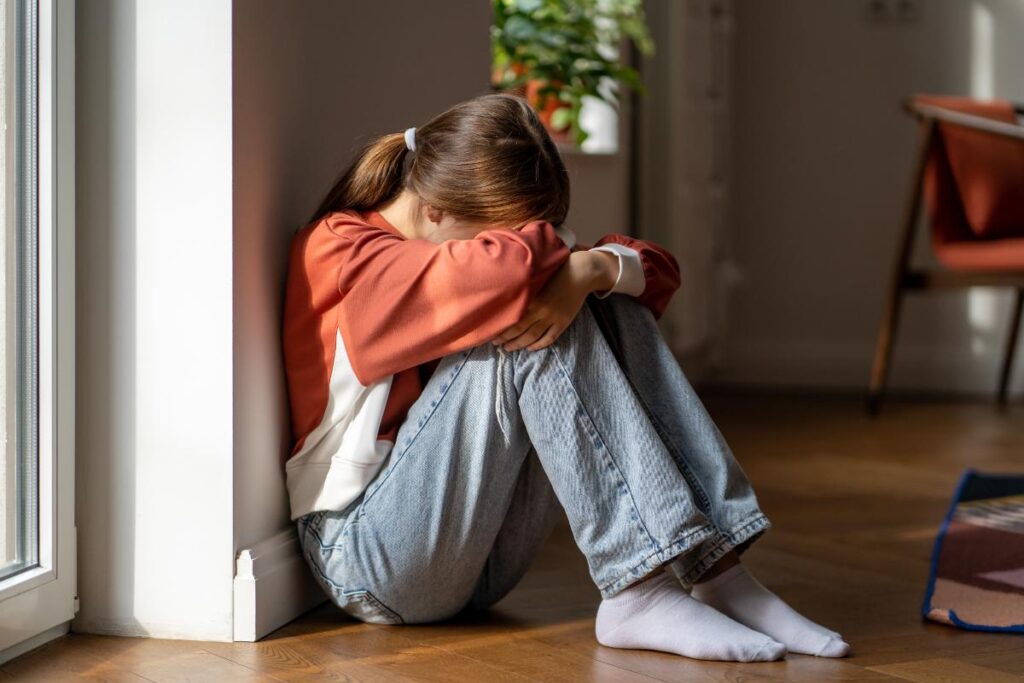About 13% of American children and young teens suffer from at least one mental health disorder, yet only about half have been seen by a mental health professional, according to a survey funded in part by the National Institute of Mental Health (NIMH) and published in the journal Pediatrics. “We need to get these kids the help they need and determine what the best type of intervention to help kids from suffering needlessly,” NIMH researcher Dr. Kathleen R. Merikangas told Reuters Health.
Are you in need of family services or mental health treatment for your child? Call us today at 844.875.5609.
What Research Tells Us About Causes of Mental Illness in Youth
According to researcher Merikangas, the problem we face is a severe shortage of mental health professionals with expertise in child psychiatry in the U.S. “There simply aren’t enough child psychiatrists to go around. It’s an urgent crisis.” Reuters reports that the survey, conducted from 2001 to 2004 among a nationally representative sample of 3,042 children aged eight to 15, provides a comprehensive look at the rates of six common mental disorders: anxiety disorder, panic disorder, eating disorders (anorexia and bulimia), depression, attention-deficit/hyperactivity disorder (ADHD), and conduct disorder.
Among the specific disorders, 8.6% had ADHD, with boys more likely than girls to have the disorder; 3.7% had depression, with girls more likely than boys to have the disorder; 2.1% had conduct disorder; 0.7% had an anxiety disorder (generalized anxiety or panic disorder); and 0.1% had an eating disorder (anorexia or bulimia). With the exception of ADHD, those rates, Merikangas noted in an NIMH-issued statement, are lower that some other surveys have found, although they are comparable to rates in certain studies.
Demographic Considerations
A closer look at the data revealed that children and teenagers of a lower socioeconomic status were more likely to report any disorder, particularly ADHD, while those of a higher socioeconomic status were more likely to report having an anxiety disorder. Mexican-Americans had significantly higher rates of mood disorders than whites or African-Americans, but overall, few ethnic differences in rates of disorders emerged.
Overall, 55% of those with a mental disorder had consulted with a mental health professional. Only 32% of youth with an anxiety disorder sought treatment. African-Americans and Mexican-Americans were significantly less likely to seek treatment than whites. Clearly, this highlights the need to identify and remove barriers to treatment for minority youth, the researchers note.
“We need to raise awareness that most of the problems that we see in adults in terms of depression, anxiety, substance abuse, even psychosis, begin in adolescence, some in childhood,” Merikangas told Reuters Health. “We need to identify these kids so that we can prevent these conditions from interfering their development—and life.”
Once identified, these adolescents need access to reputable mental health treatment. But what does that mean exactly?
Mental Health Treatment for Adolescents
Mental health treatment for adolescents is a specialized form of therapy and counseling. It focuses on helping young people address the issues they are facing related to mental health. Caring and experienced professionals work with adolescents to help them develop coping skills, build resilience, and increase their self-esteem. Adolescents can benefit from individual therapy, group therapy, family counseling, or any combination thereof. Treatment goals are tailored to the individual based on their unique needs and experiences.
Mental health treatment for adolescents can help young people address issues such as:
- Depression
- Anxiety
- Self-harm
- Substance abuse
- Eating disorders
- Bipolar disorder
- Attention deficit hyperactivity disorder (ADHD)
- Obsessive-compulsive disorder (OCD)
- Social isolation
- Gender identity or expression issues
Treatment can help adolescents to manage their emotions and understand the causes of their distress. Once this happens, they can create a plan for reducing or eliminating problematic behaviors. Therapists may use evidence-based treatments or more traditional approaches such as psychotherapy or psychodynamic approaches.
Treatment Beyond Therapy
In addition to providing support in therapy sessions, mental health professionals also work with adolescents to create strategies for healthy living. This includes helping them develop healthier lifestyle habits, such as:
- Getting adequate sleep
- Eating a balanced diet
- Managing their stress levels
Mental health professionals also help adolescents identify and build upon their strengths. As a result, they can make positive changes in their lives. Treatment typically involves regular follow-up sessions to ensure progress is being made and any additional support or resources needed can be provided. With the right children’s mental health treatment plan in place, adolescents can develop the necessary skills to lead healthy and fulfilling lives.
Get Help Today From Promises Behavioral Health
Promises Behavioral Health is committed to providing comprehensive mental health care for adolescents and their families. Our experienced clinicians are experts in adolescent development. Therefore, they can help young people struggling with a variety of mental health concerns. Our compassionate team works with adolescents on an individual basis or within the context of their family environment, depending upon what’s needed most.
If your adolescent is experiencing mental health challenges and needs help, please reach out to us today. We are here to provide the support they need on their journey toward healing and growth. Contact us now at 844.875.5609 or reach out online to learn more about how Promises can help you or your adolescent manage their mental health in a safe, supportive environment.

